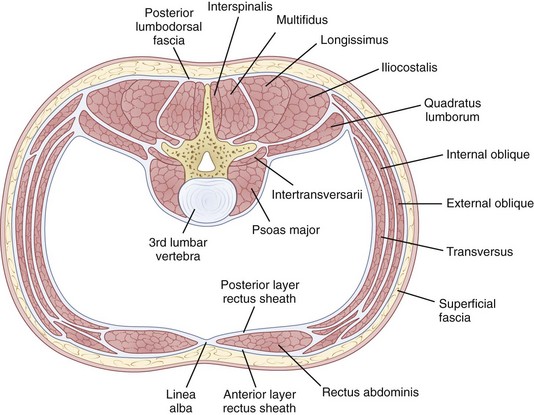
Transverse abdominis (TVA) or Transversus as it’s marked in the diagram above, is the deepest of the abdominal muscles.
It’s been touted as the miracle muscle to cure back pain, improve posture and flatten the stomach. It’s the reason why every instruction in a fitness class begins with “hollow the lower abdominals.”
It’s also why nearly every personal trainer course includes these instructions as a pre-set before each and every exercise.
Strange therefore that we have got to this stage in our evolution and still require the conscious activation of this muscle.
Particularly before we attempt everyday tasks such as pushing, pulling, or squatting.
Our ancestors must have been in agony without this information.
So where did this idea come from?
The original idea of pre-setting TVA came from a pioneering Australian study that found TVA activated late in all subjects that had lower back pain.
As a deep spinal stabiliser, TVA works on a feed forward mechanism. If you go to lift your arm, TVA will activate milliseconds before there is movement to stabilise the spine.
The Australian researchers merely found it was late activating if you had back pain. Not weak and not inactive, just a little slow.
The fitness industry, using true 1+1=3 logic, promoted the idea that early TVA activation was the key to solving back pain. Of course there is some truth in that. The problem comes when the findings of one study are used in a one size fits all form as is the case here.
Should you include TVA setting in your exercise programme?
The value of attempting to contract a muscle before an exercise is questionable at best.
There may be a time and place for it but this would depend on many factors including the exercise and the individual.
Mindlessly pre setting the same muscles before every exercise is unlikely to have an impact on back pain or anything else for that matter.
It may even be detrimental if you are attempting to force a particular muscle recruitment strategy on your body when it would prefer to do something else.
Low load core activation
For relatively low load activities such as Pilates style heel taps the “hollow the lower abdominals” cue is valid but it’s not the TVA that’s being isolated, more a contraction of the obliques.
The obliques control rotation and lumbar spine extension so are of benefit where these movements either need to be controlled or eliminated.
Watch for your lumbar spine moving away from the floor during heel taps, or the bottom of your rib cage becoming visible as signs your obliques may be weak.
High load core activation
For high load activities such as bench pressing or deadlifting, a bracing strategy is advisable. You will instinctively do this. Imagine you are about to receive a blow to the abdomen and you will have a perfect picture of bracing.
Bracing will result in the contraction of the entire trunk and is therefore not suitable when motion is required.